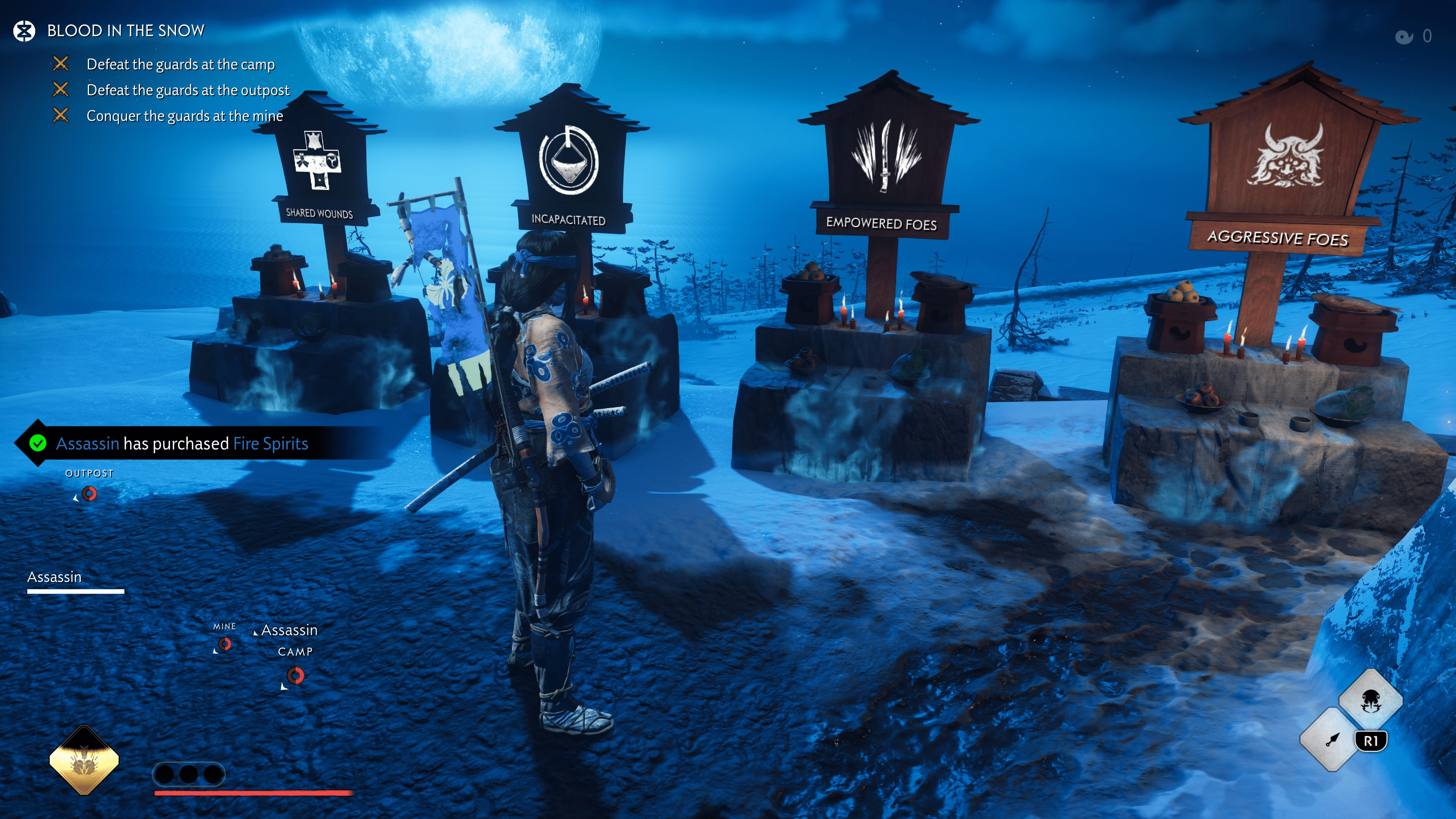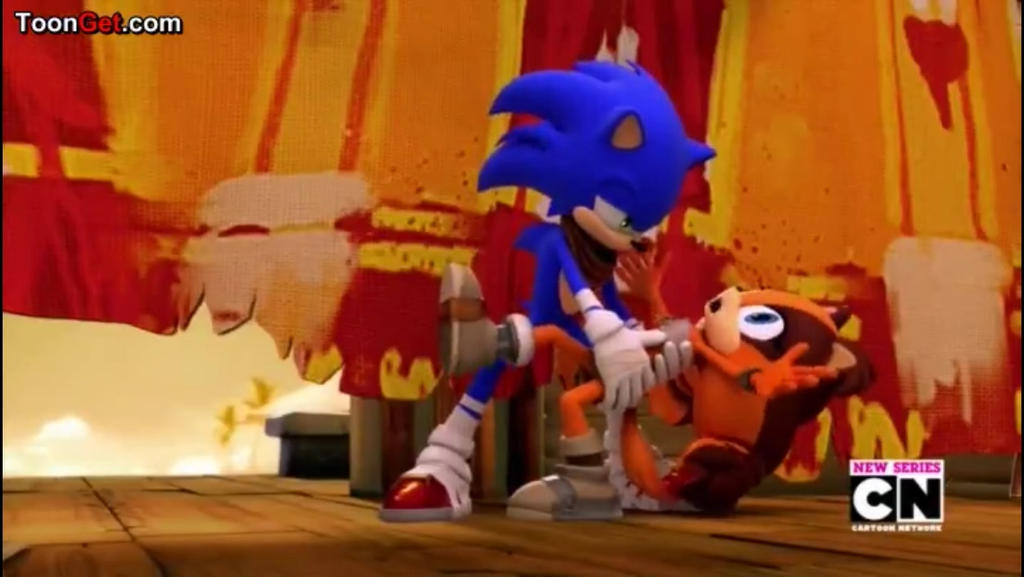Ghost Of Tsushima Review: A Gorgeous And Intriguing Adventure
Por um escritor misterioso
Descrição
Ghost of Tsushima is set to release later this week and we got to play the full game for the review. Heres what we think about the openworld game set in feudal Japan.
Releasing a brand new franchise at a time when PlayStation 4's generation is about to come to an end must be a nerve wrecking moment; for both fans and the developers at 'Sucker Punch Productions'. If I were to end a generation with a game that would define PlayStation's current generation; Ghost of Tsushima would be it. I've always wanted an Assassin's Creed set in Japan but unfortunately, Ubisoft lost the opportunity when Sucker Punch Productions first revealed the game in 2017 at Paris Game Week.It's been six years since we've seen a game from 'Sucker Punch Studios'; last being Infamous Second Son that released a few months after the PlayStation 4 launch. While the studio is no stranger to open-world games, it was a refreshing change to see the studio take on a brand new intellectual property that is set in feudal Japan during the First Mongol Invasion of Japan (1274). If you aren't well versed with Japanese history, Kublai Khan; a grandson of Genghis Khan was set on conquering Japan after usurping China and Korea for the Mongol Empire. The Island of Tsushima sits right between the Korea Strait and Japanese Strait making it a strategic island to conquer for a full-scale attack on the rest of mainland Japan. © Sucker Punch Productions_Sony Interactive EntertainmentNow, in the game, Kublai Khan is referred to as Khotun Khan; a fictional rendition of the Mongol leader who is a ruthless and deceitful general who will resort to anything to conquer the island of Tsushima before setting his sights on mainland Japan. The game opens with Khan's army landing on the shores of Tsushima, where the Samurais of the island are already waiting to confront the Mongol army. Right off the bat, we get our first glimpse of Khotun Khan's sheer ruthlessness and dishonourable ways to win battles at any cost. You play as Jin Sakai, a samurai from the island who survived the brutal battle at Komoda beach where almost every samurai has perished battling Khotun Khan's army. As a result of the battle, your uncle and Jito (local leader) Lord Shimura has been captured by Khan. As Jin, you will have to muster support from remaining Samurais, thieves and fighters to free him from captivity. Jin has been trained as a samurai by his uncle Lord Shimura which we also get a glimpse of via brilliantly timed flashbacks. These flashbacks are not only meant for simple training sequences as we also get to learn the many codes of honour and ideals the samurai have to follow. These codes or “Bushidō” for Japanese history nerds play an integral part in Jin's journey as a samurai - all in the backdrop of Mongol occupation. © Sucker Punch Productions_Sony Interactive EntertainmentHowever, to overthrow the Mongols, Jin realises in the early part of the game that following Bushidō codes may not be enough to defeat the enemy. He will have to break his code and use guerrilla warfare to successfully reclaim the island from the Mongol army. Jin often faces inner conflicts and, at times, struggles with them as he must utilise dishonourable battle tactics and weapons that stand opposite to what the samurai code stands for. Bushidō codes forbid a samurai from using guerrilla warfare, deception and instead, mandate samurais to treat their opponents with respect, honour and dignity. However, with Mongols as their enemies who do not have the same beliefs, Jin is forced to set aside his lifelong ideals and fight from the shadows. Over time, he evolves into the “Ghost” a befitting name bestowed by the Mongol army that strikes fear amongst his enemies.Ghost of Tsushima's story is a melange of personal tales set in feudal Japan that we've haven't seen in any game yet. You get to see many stories unfold in the setting of feudal Japan where powerful families, samurai clans and the shogun play an integral part of society. There are hints of previous civil wars that were fought among these clans in the Tsushima region and are forced to set their differences aside to fight a common enemy. © Sucker Punch Productions_Sony Interactive EntertainmentNarrative missions in Ghost of Tsushima are called 'Tales' and there are three different types of tales Jin can encounter. The main tale tells the story of Jin's journey that has been complemented well with other side missions called 'Tales of Tsushima' and 'Mythic Tales'. I loved the fact each Tale of Tsushima or Character side mission is deeply entwined with each act and only conclude towards the end of the game. It gives these missions more importance and meaning that ties in beautifully with the main story. Most of these side tales have compelling stories of their own that show us the agony some of the key characters are going through because of the invasion. We get to see carnage, atrocities, betrayal and even genocide that deeply impacts the overall tone of the story. Having said that, completing “Mythic Quests” was one of my favourite things to do in the game and couldn't get enough of it. I don't want to spoil these quests for anyone and highly recommend doing these quests whenever you encounter them in the world. We also have to point out, Unlike the recent Ubisoft games, you will not feel overwhelmed and intimated whenever you open the map to find these missions. You will not find your map overcrowded with different icons or points of interests that add no value to the story or character progression. © Sucker Punch Productions_Sony Interactive EntertainmentOnce you are done with the prologue, you get to see the full scale of Tsushima's vibrant and vivid playground crafted by the developers at Sucker Punch Productions. The world hosts a variety of biomes and terrains that kept me very intrigued whenever I explored an undiscovered area. As you progress through the story; you will stop to notice the picturesque colourful lavender fields, lush valleys, snow-capped mountains, bamboo forests, yellow maple trees and the iconic Sakura (Cherry Blossom) trees that make up the landscape of Japan. © Sucker Punch Productions_Sony Interactive EntertainmentEven after playing for several hours; you will be left shocked at how many times you will stop just to play around with the photo mode. There are enough scenic vistas in the world that look gorgeous at different times of the day. Another variable factor that makes the world look stunning is the dynamic weather system. Out of nowhere, even a long dull road amidst the forest can explode to life with a sudden thunderstorm or look quaint enough during dusk to start playing relaxing tunes on your flute. © Sucker Punch Productions_Sony Interactive EntertainmentExploration and discovery is a fundamental facet in this game that has been facilitated well with the beautiful island of Tsushima. While a world can look pretty, it won't serve its purpose until there are plenty of activities to do in it. As we mentioned earlier, you need to explore the world and discover key locations that are essential for upgrading your character. For example, some unknown locations are marked with question marks that could either be a traditional Japanese Onsen (Hot Spring) or a Fox Den amongst multiple others that benefit your character in some way. Resting at Onsens help in recovering and increasing Jin's health. Similarly, finding Fox Dens are equally important as these foxes are considered holy and lead you to a nearby Inari Shrine. Once you've discovered enough shrines; you will be able to unlock an additional Charm slot for your character. Charm Slots are an essential part of your build where you can equip various types of charms that boost specific stats for your character. We have to point out that exploring and discovering locations is extremely rewarding and is highly recommended to do if you want the full experience as intended by 'Sucker Punch Productions'. It is also prudent to point out the game does not have a traditional levelling system; preventing any form of level-gating you may have experienced in other open-world role-playing games. Since exploring is a key element of the game, 'Sucker Puncher Productions' have implemented a unique and innovative feature that redefines how navigation can work in games. As you may have seen from the previews; Ghost of Tsushima does not have a mini-map and you have to instead rely on something called the 'Guiding Wind'. Once you have selected your destination; the wind will guide you in the right direction by making gusts appear in your vicinity. If you stray from your path; you can simply swipe up on the trackpad to get you back on course. © Sucker Punch Productions_Sony Interactive EntertainmentI used the 'Guiding Wind' feature extensively to find objectives, shrines and other undiscovered location. I prefer this method of navigation over following traditional tracked paths in mini-maps. It let us pay more attention to the beautiful landscapes and sounds of Tsushima which one can easily miss if they are always glancing towards a corner of the screen. This way; discovering locations felt more natural and generated immense curiosity that many open-world games of this generation failed to deliver.Having said that, you cannot solely rely on the 'Guiding Wind' to get to your location. Many times, when you are near an undiscovered location or your objective; a golden/yellow bird will appear whilst making a very distinct sound to guide you to the exact location you're trying to reach. 'Sucker Punch Productions' have implemented yet another innovative way to notify a player if they are near something important using both visual and sound aids. Since the progression system in Ghost of Tsushima does not involve any grinding, most of the abilities you unlock are very rooted in Jin's samurai fighting style. Jin can also learn different stances that help in dealing with different types of enemies. These stances can be unlocked by spending “Technique Points” which you earn as your 'legend' grows. Technique points can also be spent on other kinds of skills that help in deflecting certain type of attacks and evasion. © Sucker Punch Productions_Sony Interactive EntertainmentHaving said that, the skill tree is not as expansive as other RPGs which I prefer, as it was easier to remember newly learned abilities and use them in battles. Similarly, as you progress you will add more weapons to your arsenal including Kunai knives, smoke bombs, and others which you can upgrade using these 'Technique Points' as well. You will also be using these technique points to evolve battle tactics such as 'Standoffs' and archery skills that ultimately make you a more effective warrior. Speaking of gameplay, Ghost of Tsushima implements the aforementioned stance system somewhat similar to what we've seen in the “Nioh” series. However, in Ghost of Tsushima, stances are used as a way to fight different types of enemies. For example, the 'Stone Stance' is more effective against Swordsmen and will not have any major effect on enemies with shields or brutes. Similarly, the “Moon Stance” is more effective against brutes and will have little to no effect on swordsmen. The player has to strategically switch stances by holding R2 according to the type of enemy they are fighting. © Sucker Punch Productions_Sony Interactive EntertainmentSince you face multiple types of enemies all at once; the time slows down when holding R2 so that you have enough time to make a decision. Using the right stance can also be life-saving as it will let you counter enemies with a fatal blow. If you end up using an incorrect stance according to the enemy type; you will not be able to counter his attacks and in turn can get hurt by an unblockable hit. These unblockable hits can be identified by its bright red glinting lines that will deal significant damage to Jin. You can evade these attacks until you have upgraded Jin's deflection skills that will let him parry these attacks later in the game. © Sucker Punch Productions_Sony Interactive EntertainmentAnother unique gameplay element that stood out the most was the ability to trigger “Standoffs” when approaching enemies. This is a little different from the duels we've seen in the previews and you get to challenge a fighter from a group of enemies by pressing the up D-Pad. I outright loved this element as it was literally a standoff between Jin and an enemy where we locked eyes and waited to see who made the first move. The enemy will flinch to fool you as you need to let go of the button only when the enemy attacks. If you release the button too early, you will face the consequences and if you release at the right time; Jin will unleash a lethal blow to the enemy. This mechanic alone made me approach every group of enemies almost exclusively head-on instead of using stealth as it felt very satisfying. We only stealth when it was a prerequisite for a mission or had to get out of tight situations. © Sucker Punch Productions_Sony Interactive Entertainment © Sucker Punch Productions_Sony Interactive EntertainmentA duel, on the other hand, is a one-on-one battle with an enemy that utilises many of the gameplay mechanics in the game but with a more cinematic feel. Enemies are harder and these duels can somehow be classified as boss battles but to me, it was a different form of presentation. These duels pay homage to Akira Kurosawa movies with iconic classical Japanese music, tension built up by close up shots and intense dialogues. You can even turn on the “Kurosawa” mode where everything on the screen turns Black & White with an aggressive grain filter. If you are looking for an authentic Kurosawa experience, we highly recommend turning this mode on before going ahead with duels. I've already mentioned how gorgeous the game looks but I do need to talk about the overall performance of the game on the PlayStation 4. I've played the game on the pro variant for about 36 hours and did not face any bugs or hard crashes. My entire gameplay was buttery smooth and did not notice any major dips in frame rates even though a lot was happening on the screen. If you will be playing this game on PlayStation 4 Pro, you can also adjust between higher resolution or better frame rates performance from the display settings. Additionally, you can also play the entire game in Kurosawa mode, however, I preferred to play the game normally to soak in the vivid colours present in different biomes. Having said that, I did have a similar experience as The Last of Us Part 2 where the console did heat up a bit and got quite loud especially while exploring the world. Thankfully, none of it had any effect on the game or its performance during our review sessions. Finally, this game would not be complete without the melodious soundtrack that remained with me even after I finished the game. While my knowledge of hōgaku or classical Japanese music is quite limited; I did recognise many of the key instruments such as the bamboo flute that were used to make you feel you were really in feudal Japan. Percussion Instruments like the Taiko, Ōtsuzumi, and stringed instruments like the Shamisen, Koto or the Biwa can be heard in the background when you're traversing the world or going into a battle. You even get to see the Biwa in the hands of the musicians who send you on Mythic Quests. However, the soundtrack is not only limited to hōgaku as we also get to hear cinematic background music during key moments similar to Samurai movies from the 60s/70s. Every bit of music composition in Ghost of Tsushima by Ilan Eshkeri & Shigeru Umashi is remarkable and will probably stay with me for a very long time. We highly recommend giving the above track a listen that will give you a fair idea about what we're talking about. Final Verdict © Sucker Punch Productions_Sony Interactive EntertainmentGhost of Tsushima tells an inspiring story set in feudal Japan that adds new innovative features to the open-world genre. It offers a lush world that will be the visual benchmark for future games on the PlayStation platform. With combat mechanics that never get boring and a story that is both personal and overarching; Ghost of Tsushima was an enjoyable and memorable experience. Even though the game isn't as expansive as the recent Assassin Creed games; it makes up for it with fantastic storytelling, little to no grinding and enough places to visit that keeps the player intrigued. Ghost of Tsushima reviewed on PlayStation 4 Pro using a downloadable code provided by Sony Interactive Entertainment.
Releasing a brand new franchise at a time when PlayStation 4's generation is about to come to an end must be a nerve wrecking moment; for both fans and the developers at 'Sucker Punch Productions'. If I were to end a generation with a game that would define PlayStation's current generation; Ghost of Tsushima would be it. I've always wanted an Assassin's Creed set in Japan but unfortunately, Ubisoft lost the opportunity when Sucker Punch Productions first revealed the game in 2017 at Paris Game Week.It's been six years since we've seen a game from 'Sucker Punch Studios'; last being Infamous Second Son that released a few months after the PlayStation 4 launch. While the studio is no stranger to open-world games, it was a refreshing change to see the studio take on a brand new intellectual property that is set in feudal Japan during the First Mongol Invasion of Japan (1274). If you aren't well versed with Japanese history, Kublai Khan; a grandson of Genghis Khan was set on conquering Japan after usurping China and Korea for the Mongol Empire. The Island of Tsushima sits right between the Korea Strait and Japanese Strait making it a strategic island to conquer for a full-scale attack on the rest of mainland Japan. © Sucker Punch Productions_Sony Interactive EntertainmentNow, in the game, Kublai Khan is referred to as Khotun Khan; a fictional rendition of the Mongol leader who is a ruthless and deceitful general who will resort to anything to conquer the island of Tsushima before setting his sights on mainland Japan. The game opens with Khan's army landing on the shores of Tsushima, where the Samurais of the island are already waiting to confront the Mongol army. Right off the bat, we get our first glimpse of Khotun Khan's sheer ruthlessness and dishonourable ways to win battles at any cost. You play as Jin Sakai, a samurai from the island who survived the brutal battle at Komoda beach where almost every samurai has perished battling Khotun Khan's army. As a result of the battle, your uncle and Jito (local leader) Lord Shimura has been captured by Khan. As Jin, you will have to muster support from remaining Samurais, thieves and fighters to free him from captivity. Jin has been trained as a samurai by his uncle Lord Shimura which we also get a glimpse of via brilliantly timed flashbacks. These flashbacks are not only meant for simple training sequences as we also get to learn the many codes of honour and ideals the samurai have to follow. These codes or “Bushidō” for Japanese history nerds play an integral part in Jin's journey as a samurai - all in the backdrop of Mongol occupation. © Sucker Punch Productions_Sony Interactive EntertainmentHowever, to overthrow the Mongols, Jin realises in the early part of the game that following Bushidō codes may not be enough to defeat the enemy. He will have to break his code and use guerrilla warfare to successfully reclaim the island from the Mongol army. Jin often faces inner conflicts and, at times, struggles with them as he must utilise dishonourable battle tactics and weapons that stand opposite to what the samurai code stands for. Bushidō codes forbid a samurai from using guerrilla warfare, deception and instead, mandate samurais to treat their opponents with respect, honour and dignity. However, with Mongols as their enemies who do not have the same beliefs, Jin is forced to set aside his lifelong ideals and fight from the shadows. Over time, he evolves into the “Ghost” a befitting name bestowed by the Mongol army that strikes fear amongst his enemies.Ghost of Tsushima's story is a melange of personal tales set in feudal Japan that we've haven't seen in any game yet. You get to see many stories unfold in the setting of feudal Japan where powerful families, samurai clans and the shogun play an integral part of society. There are hints of previous civil wars that were fought among these clans in the Tsushima region and are forced to set their differences aside to fight a common enemy. © Sucker Punch Productions_Sony Interactive EntertainmentNarrative missions in Ghost of Tsushima are called 'Tales' and there are three different types of tales Jin can encounter. The main tale tells the story of Jin's journey that has been complemented well with other side missions called 'Tales of Tsushima' and 'Mythic Tales'. I loved the fact each Tale of Tsushima or Character side mission is deeply entwined with each act and only conclude towards the end of the game. It gives these missions more importance and meaning that ties in beautifully with the main story. Most of these side tales have compelling stories of their own that show us the agony some of the key characters are going through because of the invasion. We get to see carnage, atrocities, betrayal and even genocide that deeply impacts the overall tone of the story. Having said that, completing “Mythic Quests” was one of my favourite things to do in the game and couldn't get enough of it. I don't want to spoil these quests for anyone and highly recommend doing these quests whenever you encounter them in the world. We also have to point out, Unlike the recent Ubisoft games, you will not feel overwhelmed and intimated whenever you open the map to find these missions. You will not find your map overcrowded with different icons or points of interests that add no value to the story or character progression. © Sucker Punch Productions_Sony Interactive EntertainmentOnce you are done with the prologue, you get to see the full scale of Tsushima's vibrant and vivid playground crafted by the developers at Sucker Punch Productions. The world hosts a variety of biomes and terrains that kept me very intrigued whenever I explored an undiscovered area. As you progress through the story; you will stop to notice the picturesque colourful lavender fields, lush valleys, snow-capped mountains, bamboo forests, yellow maple trees and the iconic Sakura (Cherry Blossom) trees that make up the landscape of Japan. © Sucker Punch Productions_Sony Interactive EntertainmentEven after playing for several hours; you will be left shocked at how many times you will stop just to play around with the photo mode. There are enough scenic vistas in the world that look gorgeous at different times of the day. Another variable factor that makes the world look stunning is the dynamic weather system. Out of nowhere, even a long dull road amidst the forest can explode to life with a sudden thunderstorm or look quaint enough during dusk to start playing relaxing tunes on your flute. © Sucker Punch Productions_Sony Interactive EntertainmentExploration and discovery is a fundamental facet in this game that has been facilitated well with the beautiful island of Tsushima. While a world can look pretty, it won't serve its purpose until there are plenty of activities to do in it. As we mentioned earlier, you need to explore the world and discover key locations that are essential for upgrading your character. For example, some unknown locations are marked with question marks that could either be a traditional Japanese Onsen (Hot Spring) or a Fox Den amongst multiple others that benefit your character in some way. Resting at Onsens help in recovering and increasing Jin's health. Similarly, finding Fox Dens are equally important as these foxes are considered holy and lead you to a nearby Inari Shrine. Once you've discovered enough shrines; you will be able to unlock an additional Charm slot for your character. Charm Slots are an essential part of your build where you can equip various types of charms that boost specific stats for your character. We have to point out that exploring and discovering locations is extremely rewarding and is highly recommended to do if you want the full experience as intended by 'Sucker Punch Productions'. It is also prudent to point out the game does not have a traditional levelling system; preventing any form of level-gating you may have experienced in other open-world role-playing games. Since exploring is a key element of the game, 'Sucker Puncher Productions' have implemented a unique and innovative feature that redefines how navigation can work in games. As you may have seen from the previews; Ghost of Tsushima does not have a mini-map and you have to instead rely on something called the 'Guiding Wind'. Once you have selected your destination; the wind will guide you in the right direction by making gusts appear in your vicinity. If you stray from your path; you can simply swipe up on the trackpad to get you back on course. © Sucker Punch Productions_Sony Interactive EntertainmentI used the 'Guiding Wind' feature extensively to find objectives, shrines and other undiscovered location. I prefer this method of navigation over following traditional tracked paths in mini-maps. It let us pay more attention to the beautiful landscapes and sounds of Tsushima which one can easily miss if they are always glancing towards a corner of the screen. This way; discovering locations felt more natural and generated immense curiosity that many open-world games of this generation failed to deliver.Having said that, you cannot solely rely on the 'Guiding Wind' to get to your location. Many times, when you are near an undiscovered location or your objective; a golden/yellow bird will appear whilst making a very distinct sound to guide you to the exact location you're trying to reach. 'Sucker Punch Productions' have implemented yet another innovative way to notify a player if they are near something important using both visual and sound aids. Since the progression system in Ghost of Tsushima does not involve any grinding, most of the abilities you unlock are very rooted in Jin's samurai fighting style. Jin can also learn different stances that help in dealing with different types of enemies. These stances can be unlocked by spending “Technique Points” which you earn as your 'legend' grows. Technique points can also be spent on other kinds of skills that help in deflecting certain type of attacks and evasion. © Sucker Punch Productions_Sony Interactive EntertainmentHaving said that, the skill tree is not as expansive as other RPGs which I prefer, as it was easier to remember newly learned abilities and use them in battles. Similarly, as you progress you will add more weapons to your arsenal including Kunai knives, smoke bombs, and others which you can upgrade using these 'Technique Points' as well. You will also be using these technique points to evolve battle tactics such as 'Standoffs' and archery skills that ultimately make you a more effective warrior. Speaking of gameplay, Ghost of Tsushima implements the aforementioned stance system somewhat similar to what we've seen in the “Nioh” series. However, in Ghost of Tsushima, stances are used as a way to fight different types of enemies. For example, the 'Stone Stance' is more effective against Swordsmen and will not have any major effect on enemies with shields or brutes. Similarly, the “Moon Stance” is more effective against brutes and will have little to no effect on swordsmen. The player has to strategically switch stances by holding R2 according to the type of enemy they are fighting. © Sucker Punch Productions_Sony Interactive EntertainmentSince you face multiple types of enemies all at once; the time slows down when holding R2 so that you have enough time to make a decision. Using the right stance can also be life-saving as it will let you counter enemies with a fatal blow. If you end up using an incorrect stance according to the enemy type; you will not be able to counter his attacks and in turn can get hurt by an unblockable hit. These unblockable hits can be identified by its bright red glinting lines that will deal significant damage to Jin. You can evade these attacks until you have upgraded Jin's deflection skills that will let him parry these attacks later in the game. © Sucker Punch Productions_Sony Interactive EntertainmentAnother unique gameplay element that stood out the most was the ability to trigger “Standoffs” when approaching enemies. This is a little different from the duels we've seen in the previews and you get to challenge a fighter from a group of enemies by pressing the up D-Pad. I outright loved this element as it was literally a standoff between Jin and an enemy where we locked eyes and waited to see who made the first move. The enemy will flinch to fool you as you need to let go of the button only when the enemy attacks. If you release the button too early, you will face the consequences and if you release at the right time; Jin will unleash a lethal blow to the enemy. This mechanic alone made me approach every group of enemies almost exclusively head-on instead of using stealth as it felt very satisfying. We only stealth when it was a prerequisite for a mission or had to get out of tight situations. © Sucker Punch Productions_Sony Interactive Entertainment © Sucker Punch Productions_Sony Interactive EntertainmentA duel, on the other hand, is a one-on-one battle with an enemy that utilises many of the gameplay mechanics in the game but with a more cinematic feel. Enemies are harder and these duels can somehow be classified as boss battles but to me, it was a different form of presentation. These duels pay homage to Akira Kurosawa movies with iconic classical Japanese music, tension built up by close up shots and intense dialogues. You can even turn on the “Kurosawa” mode where everything on the screen turns Black & White with an aggressive grain filter. If you are looking for an authentic Kurosawa experience, we highly recommend turning this mode on before going ahead with duels. I've already mentioned how gorgeous the game looks but I do need to talk about the overall performance of the game on the PlayStation 4. I've played the game on the pro variant for about 36 hours and did not face any bugs or hard crashes. My entire gameplay was buttery smooth and did not notice any major dips in frame rates even though a lot was happening on the screen. If you will be playing this game on PlayStation 4 Pro, you can also adjust between higher resolution or better frame rates performance from the display settings. Additionally, you can also play the entire game in Kurosawa mode, however, I preferred to play the game normally to soak in the vivid colours present in different biomes. Having said that, I did have a similar experience as The Last of Us Part 2 where the console did heat up a bit and got quite loud especially while exploring the world. Thankfully, none of it had any effect on the game or its performance during our review sessions. Finally, this game would not be complete without the melodious soundtrack that remained with me even after I finished the game. While my knowledge of hōgaku or classical Japanese music is quite limited; I did recognise many of the key instruments such as the bamboo flute that were used to make you feel you were really in feudal Japan. Percussion Instruments like the Taiko, Ōtsuzumi, and stringed instruments like the Shamisen, Koto or the Biwa can be heard in the background when you're traversing the world or going into a battle. You even get to see the Biwa in the hands of the musicians who send you on Mythic Quests. However, the soundtrack is not only limited to hōgaku as we also get to hear cinematic background music during key moments similar to Samurai movies from the 60s/70s. Every bit of music composition in Ghost of Tsushima by Ilan Eshkeri & Shigeru Umashi is remarkable and will probably stay with me for a very long time. We highly recommend giving the above track a listen that will give you a fair idea about what we're talking about. Final Verdict © Sucker Punch Productions_Sony Interactive EntertainmentGhost of Tsushima tells an inspiring story set in feudal Japan that adds new innovative features to the open-world genre. It offers a lush world that will be the visual benchmark for future games on the PlayStation platform. With combat mechanics that never get boring and a story that is both personal and overarching; Ghost of Tsushima was an enjoyable and memorable experience. Even though the game isn't as expansive as the recent Assassin Creed games; it makes up for it with fantastic storytelling, little to no grinding and enough places to visit that keeps the player intrigued. Ghost of Tsushima reviewed on PlayStation 4 Pro using a downloadable code provided by Sony Interactive Entertainment.

Ghost Of Tsushima Director's Cut review – Legends of the samurai

Ghost of Tsushima: Photo Mode Review
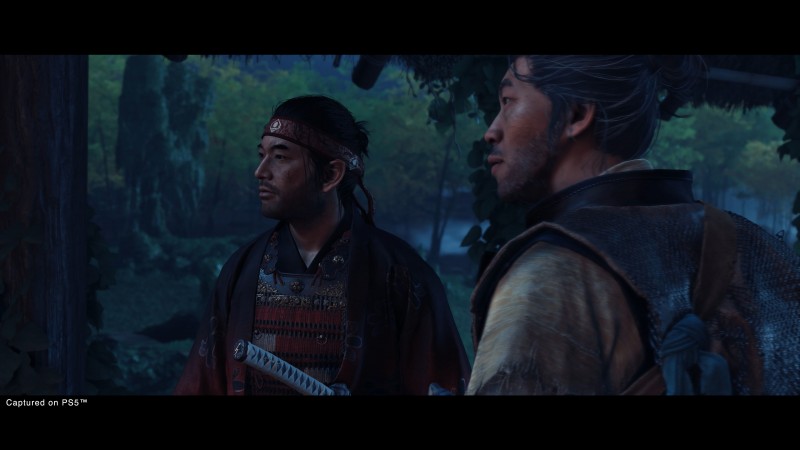
The Ghost of Tsushima Director's Cut Is A Must-Play For Fans
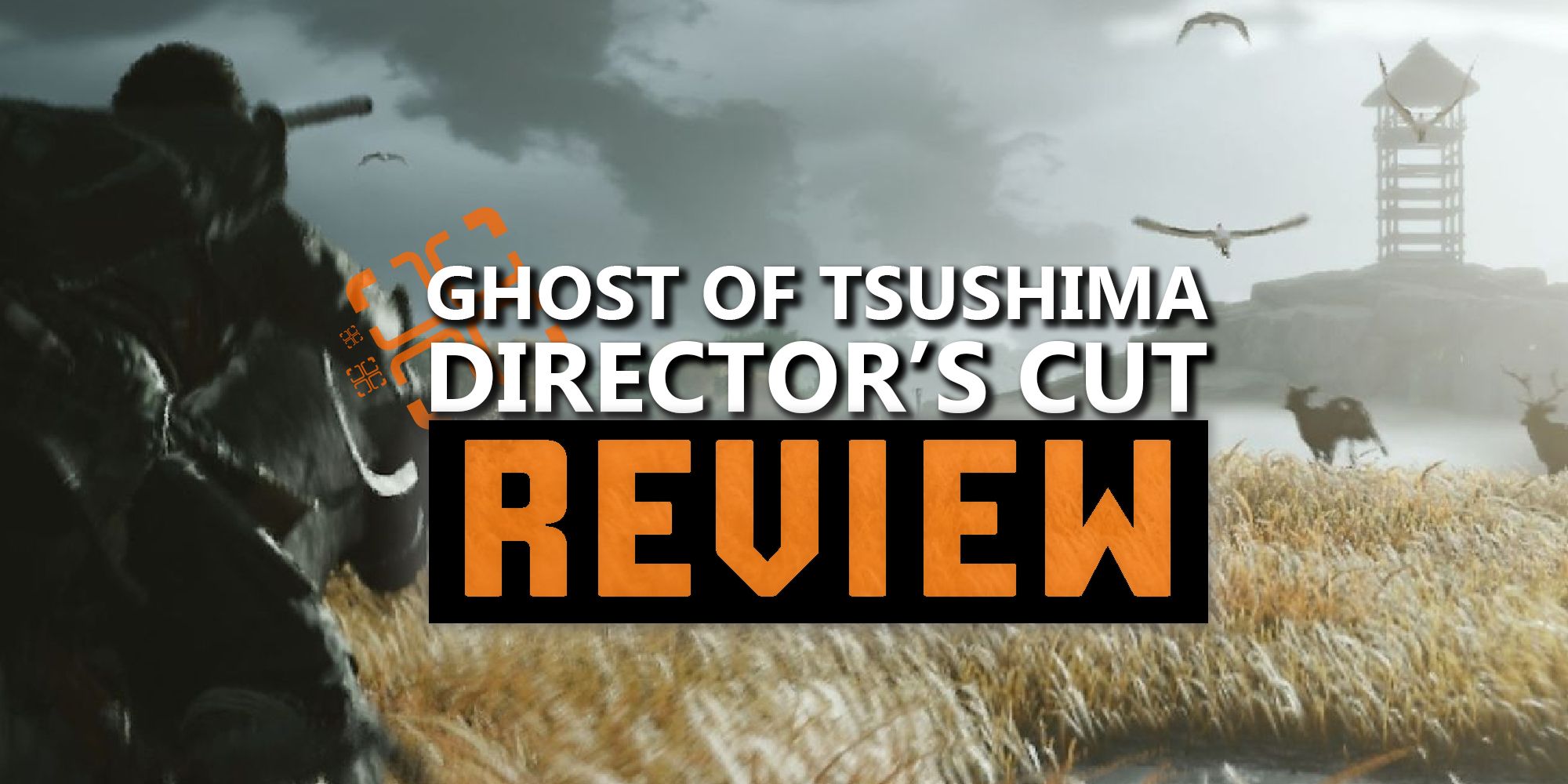
Ghost of Tsushima: Director's Cut Review - A Gorgeous PS5 Upgrade
Review: Ghost of Tsushima Is Just Another Open World Experience

Ghost of Tsushima Review Beautiful, Elegant, Familiar

Ghost of Tsushima Director's Cut Review
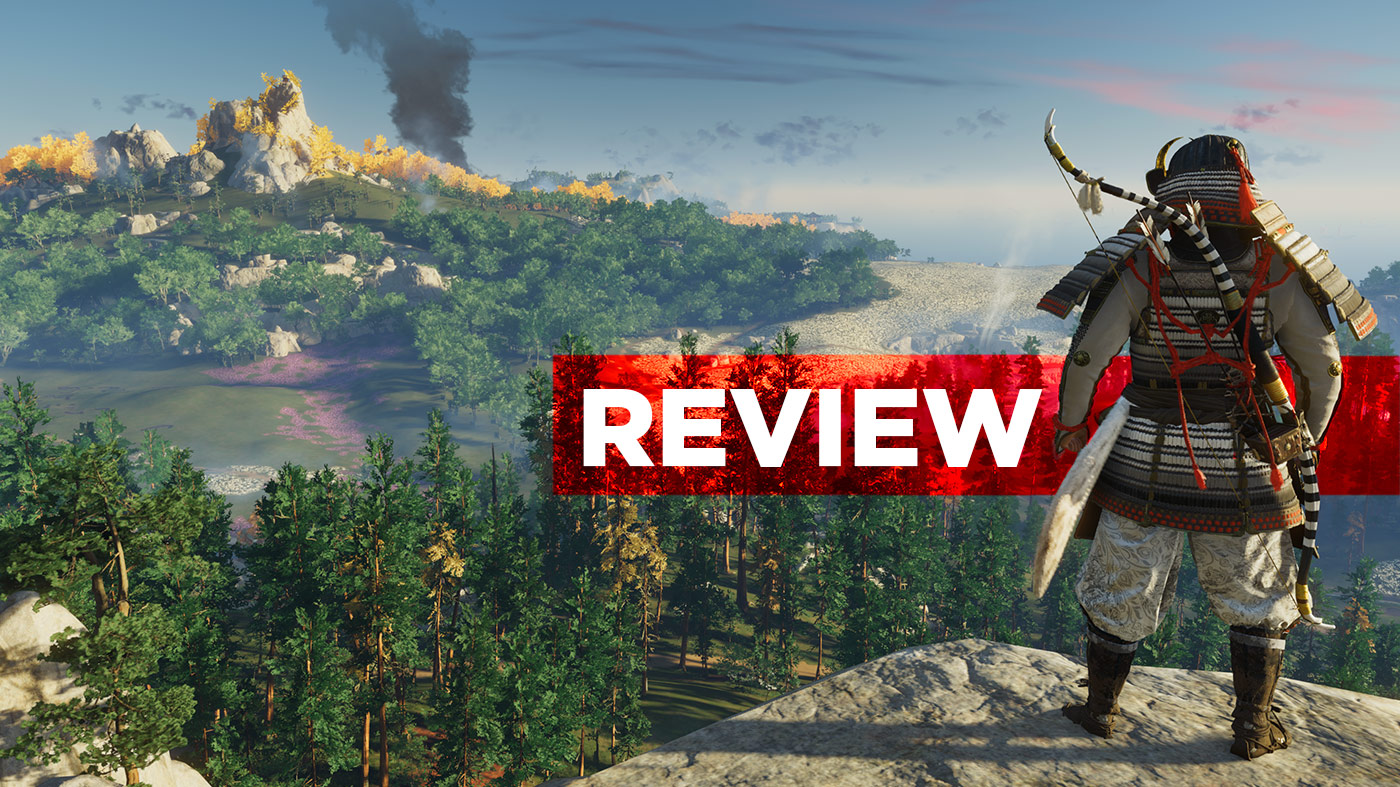
Ghost of Tsushima Review - Beautiful And Rewarding

Forspoken review: A magical world with several cracks

Ghost of Tsushima review -- Samurai's creed
de
por adulto (o preço varia de acordo com o tamanho do grupo)



